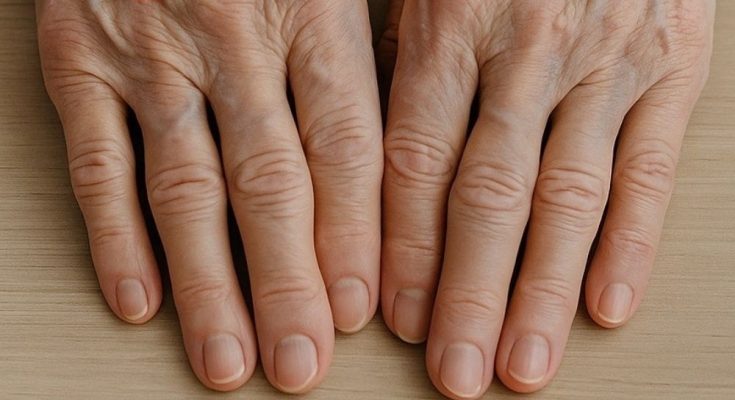As we grow older, our bodies undergo countless transformations—some expected, others more subtle. One often overlooked change is the increased visibility of veins, especially on the hands, arms, legs, and chest. While these prominent veins can seem concerning at first, they are usually a normal part of the aging process.
Thinning Skin and Collagen Loss
One of the primary reasons veins become more noticeable with age is due to changes in the skin. As we age, the body produces less collagen and elastin—the proteins that help keep our skin firm and elastic. This results in thinner, less resilient skin that becomes more transparent over time, revealing the veins beneath more clearly.
Additionally, the layer of fat just under the skin gradually diminishes. This subcutaneous fat once served as a natural cushion that concealed blood vessels. With less of it, veins are more likely to show through the skin’s surface.
Weakening of Vein Structure
Aging also affects the veins themselves. The walls and valves within veins lose their elasticity and strength, making it more difficult for blood to flow efficiently—particularly from the lower body back to the heart. This can lead to blood pooling in the veins, causing them to swell and become more visible.
In some cases, these changes may contribute to the development of varicose veins—enlarged, twisted veins that often appear under the skin. This is especially common among older adults who spend long periods sitting or standing.
Slower Circulation
As we age, circulation tends to slow down. Reduced physical activity, hormonal changes, and shifts in blood pressure all impact how effectively blood moves through the body. Poor circulation can cause veins to dilate or become engorged, making them appear darker and more prominent.
Genetics and Lifestyle Habits
Not everyone experiences visible veins in the same way. Genetics play a significant role—if your parents had prominent veins, you’re more likely to develop them too. Lifestyle factors also influence their appearance. Smoking, dehydration, prolonged sun exposure, and inadequate sunscreen use can speed up skin thinning and make veins more noticeable.
Physical fitness can also have an impact. Active individuals, especially those with low body fat or who engage in strength training, often have more visible veins. As muscles grow and fat decreases, veins naturally become closer to the surface.
When to Seek Medical Advice
In most cases, visible veins are harmless and primarily a cosmetic concern. However, if veins suddenly appear swollen, painful, warm, or are accompanied by skin discoloration or leg swelling, it’s important to consult a healthcare provider. These could be signs of conditions such as venous insufficiency or blood clots.
Embracing the Change
Prominent veins don’t have to be hidden or feared—they’re part of your body’s story. They reflect a life lived, experiences had, and strength carried through the years. For those who are bothered by their appearance, cosmetic options like sclerotherapy or laser treatments are available to help reduce or remove them.
Final Thoughts
Visible veins are a natural part of aging, often resulting from thinner skin, reduced fat, slower blood flow, and weakened vein walls. While they might become more noticeable over time, they are generally harmless. Understanding the reasons behind these changes can help you accept them with confidence—or explore treatment options if that’s your preference.







